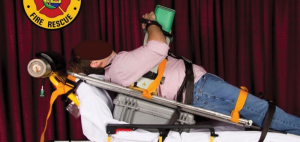
A study recently published in Critical Care Medicine examines the feasibility and safety of performing “head-up CPR,” a bundled technique that involves mild elevation of the head and torso for patients experiencing out-of-hospital cardiac arrest (OOHCA). Conducted between Jan. 1, 2014 and June 30, 2017 by Palm Beach County Fire Rescue (Fla.) crews, the study was led by industry leaders such as Paul Pepe, MD, Peter Antevy, MD, Kenneth Scheppke, MD, and others. The team analyzed the quality of patient outcomes before, during and after the combined use of a LUCAS mechanical CPR device with the head-up/torso-up positioning, a strategy designed to increase venous return from the brain to the heart.
Over the course of the study, there were 2,322 OOHCA cases assessed for clinical outcomes based on the frequency of successful resuscitations resulting from the bundled technique. A pit-crew approach will best execute this by securing a LUCAS (to which an impedance threshold device is attached for increased perfusion) to a scoop stretcher, under which a hard container is placed to elevate the patient by approximately 20 degrees.
Results showed successful resuscitation rates eventually doubled after EMS providers transitioned to the bundled technique and no clinical complications were encountered.
The authors of the study conclude that “These findings make a compelling case that this bundled technique will improve out-of-hospital cardiac arrest outcomes significantly in other clinical evaluations."
To read the complete study, click here.
SOURCE: EMS World, reprinted with permission
